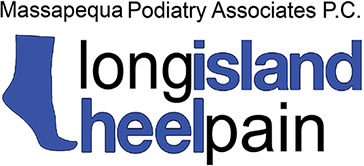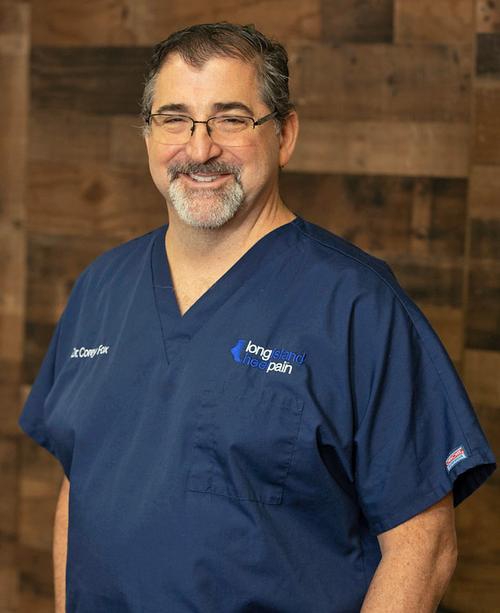It’s a fact that if you have toenails, you can develop an ingrown nail at any point during your life. Some babies are born with a toenail that’s ingrown—which may be attributed to foot position in the womb—and this nail condition affects many seniors as well. When you're suffering from nail pain in New York, it's important to see an experienced and professional Nassau County ingrown toenail doctor to treat your conerns quickly and effectively.
Find Relief from Ingrown Toenail Pain
An ingrown toenail causes pain, discomfort, and also places you at risk for potential infection. When the ingrown edge pierces the skin, it creates an opening that can allow microorganisms—bacteria, viruses, fungi—to enter the body. Infections from these organisms are bad enough for otherwise healthy individuals, but can be downright dangerous when there are existing medical conditions, like diabetes, that compromise the immune system.
When peripheral neuropathy (nerve damage) coexists with diabetes, it is possible to not even feel that a nail has become ingrown (which highlights the importance of a daily foot inspection). This can be a concern, as the infection risk is greater for diabetic individuals.
 Of course, the pain or discomfort is likely going to be the reason you want to have the condition resolved. The good news is that there are many ways to find relief from painful symptoms, and our Nassau County ingrown toenail doctor is here to help.
Of course, the pain or discomfort is likely going to be the reason you want to have the condition resolved. The good news is that there are many ways to find relief from painful symptoms, and our Nassau County ingrown toenail doctor is here to help.
Conservative Care for Ingrown Toenails
Dr. Corey Fox and Dr. Justin LoBello will start your ingrown toenail treatment by assessing your particular case. This will determine the best course of action. Factors like severity and cause—along with other considerations (like if you have diabetes or the condition is recurrent)—point to the direction of an appropriate treatment plan.
If you have a mild case, and especially if you are catching the problem at an early stage, home care may be helpful. This entails soaking the appropriate foot to soften the nail, and then carefully lifting the ingrown edge. Place a bit of clean, waxed dental floss under the edge, to encourage the nail to grow above the skin. You can lower infection risk by using antibiotic cream or ointment and a fresh bandage.
It needs to be noted that our Nassau County ingrown toenail doctor does not recommend attempting to treat an ingrown toenail on your own if you are diabetic. In this case, come see us as soon as possible.
You can also come to Massapequa Podiatry Associates for professional care if you are reluctant to try dealing with the problem on your own, or your attempts have been unsuccessful. If the condition is caught at an early stage—and there aren’t any signs of infection or severe pain—our ingrown toenail doctor can trim the toenail and keep it at a comfortable position for you.
To relieve pain caused by an ingrown nail, our Nassau County ingrown toenail doctor may prescribe or recommend medication, which can include over-the-counter options like acetaminophen, ibuprofen, or naproxen sodium. Be sure to check with our office if you have any questions or concerns about this. We can also let you know if you are taking an appropriate dose.
We now offer a new, innovative treatment called Onyfix Nail Correction System. This treatment does not require removing the nail or other invasive procedures! It is a process that we adapt specifically to patients of varying ages and medical needs without it having a major impact on your daily life. Onyfix can be used to physically correct the growth of the nail over time and restore it to its original form.
Permanent Nail Removal
Some cases require more than conservative treatment. In these instances—and especially if a toenail repeatedly becomes ingrown—our Nassau County ingrown toenail doctor might recommend removing either a portion of the affected nail, or the entire toenail. When an entire toenail needs to be removed, it is usually best practice to make this a permanent condition. To do so, a chemical solution is used to destroy the nail matrix (the part of your toe that causes nail tissue to grow).
Now, we realize it might seem as though removing a toenail is painful, but this isn’t necessarily the case. Keep in mind that anesthesia is used before the procedure to numb the area.
How to Prevent an Ingrown Toenail
 The best form of treatment is always to take measures and prevent a problem from developing in the first place. With regard to ingrown toenail prevention, the following practices can lower your risk:
The best form of treatment is always to take measures and prevent a problem from developing in the first place. With regard to ingrown toenail prevention, the following practices can lower your risk:
- Always wear shoes that fit properly. There should be about a thumb’s width of space between the front of the shoe and your longest toe, and you should be able to wiggle your toes freely. If these aren’t applying to the shoes you’re wearing, pick another pair.
- Protect your feet. If you need to move heavy objects on a frequent basis for your job, be sure to protect your feet with (well-fitting!) steel-toed work boots or safety shoes.
- Clip your toenails the right way. Too often, toenails that are clipped too short and rounded off become ingrown. Make sure you trim your nails straight across and keep them roughly even with the edge of your toes.
Schedule an Appointment With the #1 Nassau County Ingrown Toenail Doctor Today!
Ingrown toenail treatment is a service provided by our team here at Massapequa Podiatry Associates, but it’s certainly not the only one. In fact, we provide comprehensive treatment and professional services to address a wide range of foot and ankle issues. If you are suffering from pain or impaired function, contact us, and find out what we can do to help you. Give us a call at 516-541-9000, or connect with us online right now.

